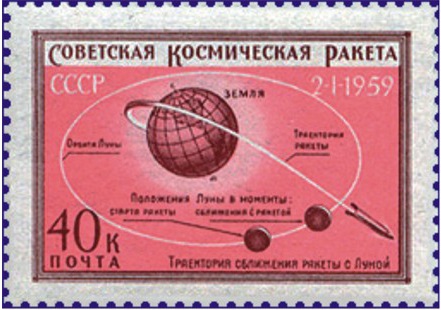History
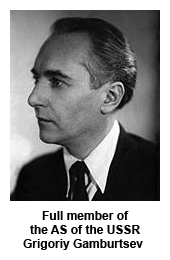
The Geophysical Center of the Russian Academy of Sciences (GC RAS) in its present status was set up as a research institute in 1992 by the RAS Presidium Resolution of July 23, 1992. GC RAS was formed with reorganizing the Interdepartmental Geophysical Committee (IGC) of AS USSR. The latter was established in January 1961 in compliance with a decision of the USSR Council of Ministers (Act of 11 January signed by A. N. Kosygin, the First Deputy Chairman of the Council of Ministers). In its turn the IGC of AS USSR was the successor of the Interdepartmental Committee established at the Presidium of the Academy of Sciences of the USSR in August 1954 to prepare and implement the International Geophysical Year.
The major goals of IGC were planning and carrying out complex international geophysical research projects and programs using many-sided scientific approach to studied objects. Another important goal was further development of the World Data Centers (WDC) that were formed during IGY and continued functioning in IGC.
The Earth is a complex space body, which has a number of spheres: the core, the mantle, the crust, biosphere, atmosphere, ionosphere, radiation belts and others. Generally the Earth is a complex dynamic system in which processes on various time and space scales go on. Joint efforts of researchers in different fields and in many countries of the world are aimed at studying the Earth as a whole and the processes in it. IGC focused on integrating the Soviet geophysics and related earth sciences into this process.
The first steps in coordinating research in geoscience were made as early as in the first half of the XIX century. However the era of international joint work in geophysics has really begun on 1 August 1882 with the start of the First International Polar Year (I IPY). Its program comprised research of phenomena and processes going on in high latitudes of the Northern hemisphere. Particular attention was given to research in weather affecting the climate of the Earth and in drifting ice. Geomagnetic phenomena in the areas around the magnetic pole of the Earth were studied as well. It was for the first time in history that scientists of 11 countries joined their efforts to accomplish this program. Academician of the Petersburg AS G. I. Vildt, the Russian representative, was elected the President of the International Polar Commission, which headed all the activities of the first IPG.
Fifty years later, the Second International Polar Year (II IPY) began on 1 August 1932. Its program included the studies of magnetic storms, aurora borealis, ionosphere condition, cosmic ray flow reaching the Earth, and weather phenomena and their interrelations with processes going on in the Sun. Scientists from 44 countries participated in the Second International Polar Year. Work was carried out in more than 100 stations; a half of them was set up in the northern and southern high-latitude areas. Data obtained in the II IPY were not used completely because the Second World War had stopped the cooperation of researchers. Not all data collected during II IPY had been published by the beginning of the war and some data were destroyed in bombardments and lost for science. Many materials could only be used if compared with analogs. Nevertheless the II International Polar Year was a milestone in the studies of the Earth. The achievements as well as failures of the II IPY suggested the necessity of coordinated activities of geophysicists of all the countries of the world.
After the end of the Second World War the world scientific community began to make preparations for the next Polar Year. Taking into consideration more expanded tasks of research this intention was transformed into the idea of the International Geophysical Year, which would not be limited by studies in high latitudes. The IGY was the greatest scientific international project in the middle of the XX century. Scientists of 67 countries, which makes about two thirds of all the countries of the world at that time, participated in it. The IGY started on 1 July 1957 and was over on 31 December 1958.
Subsequently at the initiative of the Soviet scientists the IGY was extended to 1959 and named “International geophysical cooperation” in order to continue collecting data and to use the equipment that had been delivered to difficult terrains.
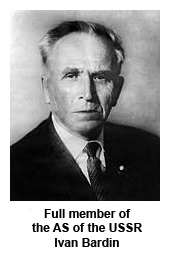
As in the other countries participating in IGY, in the USSR in compliance with the Government decision, a special body was formed in August 1954 to coordinate work, that was the Interdepartmental Committee at the AS USSR Presidium for preparing and conducting the International Geophysical Year (in abbreviated form is was called the Soviet Committee for IGY). The head of the Committee was Academician Grigory Aleksandrovich Gamburtsev, an outstanding Soviet geophysicist. After his death in 1955, Academician Ivan Pavlovich Bardin, Vice-President of AS USSR, became the Committee Chairman. Corresponding member of AS V. V. Belousov, corresponding member of AS Yu. D. Boulanger, Professor N. V. Pushkov and Academician F. F. Davitaya were appointed Deputy Chairs. Professor V. A. Troitskaya became scientific secretary of the Committee.
Sections of the Committee were formed according to planetary geophysics subdivisions: Meteorology and the Atmosphere Physics, Geomagnetism, Aurora Borealis, Solar Activity, Cosmic Rays, Ionosphere, Meteors, Longitudes and Latitudes, Oceanology, Glaciology, Seismology, Gravimetry, and Rockets and man-made Satellites of the Earth. The sections worked out detailed plans of the participation of our country in the IGY, coordinated it with the plans of other countries and tasks set up by the Special International Committee of IGY (CSAGI).
On 11 June 1956, Resolution No. 789 of the USSR Council of Ministers was adopted that had been prepared by the Committee. According to it, departments were bound to implement plans of observations and research approved by the Interdepartmental Committee for execution of the IGY. The resolution also stipulated measures to provide financial means including delivery of devices and equipment for the Soviet observations of IGY, introduction and production of new devices and structures, construction of stations and other objects.
The same resolution of the USSR Council of Ministers allotted at the expense of different sources the amount of 70 million rubles to prepare for the IGY in 1956 (now it amounts to approximately 20 million dollars) and an amount of 1 million 200 thousand exchange rubles to obtain devices and materials abroad and also bounded those departments to include in their plans and budgets required labor resources, investments, and allocations for scientific operational expenses in 1957-1958.
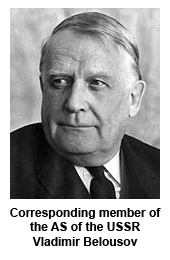
When planning the IGY a mechanism was envisaged that ensured safety of obtained data as well as free access to data of scientists and researchers of all countries. The governments of two leading countries agreed to form and support financially World Data Centers, bodies that never had analogs before. One of them was WDC A in the USA and the other was WDC B in the Soviet Union. Both World Data Centers received observation data on all branches of geophysics that were included in the IGY program. The formation of WDC system was an important result of a system approach to the IGY implementation as an international project. Later on the WDC system was considerably expanded.
Formally, the task of ensuring the participation of the USSR in the work of the permanent international geophysical organizations was within the competence of the Committee for Geodesy and Geophysics of the Department of Physical and Mathematical Sciences of the USSR, established in 1955. However, in the period from 1954 to 1959 (during the preparation and execution of the IGY) cooperation in the field of geophysics was carried out mainly by the Soviet IGY Committee. Functions of the Committee for Geodesy and Geophysics were limited to participation in specific activities.
By 1960 it became apparent that the Committee for Geodesy and Geophysics in the form in which it existed, was unable to cope with both the completion of work on the IGY, and with considerably enlarged international scientific cooperation. In this regard, the question arose about the need to create on the basis of the Committee for Geodesy and Geophysics and the Soviet Committee for the IGY a single interdepartmental committee (or council) for complex geophysical research and international cooperation in geophysics.
In January 1961, the Interdepartmental Geophysical Committee at the auspices of the Presidium of the Academy of Science of the USSR was formed on the basis of the Soviet Committee for IGY. It had the following responsibilities:
- coordination and planning of complex international geophysical research projects and programs;
- ensuring the USSR participation in corresponding international organizations of the International Council of Scientific Unions (ICSU) and the International Union of Geodesy and Geophysics (IUGG) and in multilateral cooperation of the Academies of Science of socialist countries;
- international data exchange on planetary geophysics; approving and publishing results obtained by international geophysical research projects.
On 16 September 1970, the Presidium of the Russian Academy of Science adopted a resolution on uniting IGC and WDC. Thus the World Data Center (WDC В) for Solar-Terrestrial Physics became a part of the IGC in 1971. The World Data Center for the Physics of the Solid Earth was formed in 1971. From the moment of its formation, the corresponding member of AS Vladimir Vladimirovich Belousov, a well-known Soviet geologist, was IGC’s chief for almost 30 years (1961-1990). From 1960 to 1963, V. V. Belousov was President of the International Union of Geodesy and Geophysics.
During 10 years from 1975 to 1985 the staff of IGC has gradually increased from 82 people in 1975 to 91 people in 1985. In this case the number of researchers in WDC and other subdivisions of IGC increased from 22 researchers in 1975 to 29 in 1985. Many young specialists worked in IGC. For example, in 1980 28 people under 30 years of age worked there. Almost a half of researchers had scientific degrees. About a half of all co-workers were engaged in WDC laboratories (41 people, 30 of them worked in the Laboratory for solar-terrestrial physics data and 11 people worked in the Laboratory for solid earth physics). WDC researchers made a considerable contribution to the automation of geophysical data processing and storage. American scientists were involved in dealing with such problems in 1979-1980. Scientists of all over the world use results obtained at that time up until now. At that time, the laboratory “The Atomic and Sub-atomic Data Center” in which 5 researchers worked was a part of IGC. The laboratory chief was I.P. Selinov, one of the creators of hydrogen bomb who worked together with Academician Andrei Sakharov.
The perestroika of the 1980s caused reorganizing of research institutes. In 1991 the Russian Academy of Sciences became the successor of the USSR Academy of Sciences. On the basis of IGC in 1992 the National Geophysical Committee of the Russian Federation was formed that united sections and committees of IGC. The Committee became the national representative of Russia in the International Union of Geodesy and Geophysics.
The Geophysical Center was established as a research institute of RAS with the personnel of IGC and World Data Center B. Major tasks of GC RAS were to collect and analyze data with the use of modern Internet technologies and to develop information resources of geoscience. The Geophysical Center became the basic organization of the National Geophysical Committee of the Russian Federation and the Russian National CODATA Committee. Internet-oriented modern system of computer telecommunication with research institutes of many countries of the world was created. The most important line of research was developing information technologies and adapting them to geophysical research. Powerful information resources were constructed in different fields of geoscience. Since that time the Geophysical Center RAS has considerably enlarged the scope of scientific problems under studies. It carried out research in space geodesy and altimetry, geodynamics, geoecology of nuclear fuel cycle objects, information geophysics etc. This expansion of GC domain was noted in 1990-2004 when the corresponding member of RAS Gennady Aleksandrovich Sobolev, an outstanding seismologist, was Director of GC RAS. From 1994 to 2004 G. A. Sobolev was also President of National Geophysical Committee of RF. From 1994 to 1998 he was President of the European Seismological Commission (ESC).
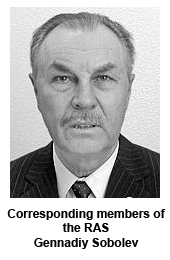
In July 2005, the team of the Center of Geodetic Data Studies (CGDS) of IPE RAS with a powerful computation center joined the Geophysical Center. In GC a powerful cluster on the basis of several tens of processors was constructed. It expanded the themes of research. Important results were obtained in the elaboration of mathematic methods of artificial intelligence and their application to identification and systematization of geophysical data. Active research in GIS and their applications was started to analyze natural risk. Numerous projects were successfully carried out to study informational society technologies and to apply them to management and geophysical data studies.
As of today the scientific potential of GC RAS is 67 researchers and engineers, among them 2 members of RAS, 10 Doctors of Science and 14 PhDs. The topics of scientific research are determined by the GC regulations that define major directions of activity. For the most part GC carries out fundamental research aimed at achieving a new level of understanding of the processes going on in the Earth with the use of global information resources and new methods of their combined scientific studies based on artificial intelligence.
Information resources created in GC and methods of their processing are used in different fields of fundamental and applied science, such as geochemistry, geology, space physics etc. WDCs collect data of world observatories network on many fields of planetary geophysics: geomagnetism, seismology, gravimetry, thermal flow, ionosphere phenomena, cosmic rays, data on interplanetary medium and solar activity from 1957 to the present time. Data of international projects with GC participation occupy a prominent place in it.
GC supplies data on a regular basis and on requests (now by e-mail and online) to organizations of different countries included into the system of World Data Centers. GC gives special attention to supplying data to scientists of the institutes of the Earth Sciences Department of RAS as well as to a number of other Russian organizations participating in WDC system activity. GC has a lot of experience using modern computer technologies and artificial intelligence methods to collect, systematize, process, visualize and manage the storage and distribution of large arrays of geological and geophysical data. In this case development of databases and data banks is especially important. In the Center, software is elaborated especially for the analysis of data and checking data quality, data processing, data selection from bases by various criteria and data visualization in a form convenient for users: construction of multi-dimensional charts of spatial distribution of events’ locations, measuring stations, tracks, deep sections, various plots and diagrams. Databases are accompanied by information and references for users. A special system for remote users providing online access to information resources and databases in the Internet was also developed.
For further development of distributed Internet-oriented resources and efficient access of users to information resources of GC a modern computational node connected with high-speed optical fiber channel (2 Gbps) and a node of basic network MSU-RAS was set up in the Geophysical Center. The node comprises a cluster of distributed databases of 2 processor modules, a central server of the local network and seven information servers controlling and providing network users access to databases of WDC and GC RAS and GC electronic publications: International Journal of Geomagnetism and Aeronomy, the Russian Journal of Earth Sciences and other information resources.
The Center has a library, which is a branch of the Library of Natural Science (BEN), regularly enriched with Russian and foreign periodicals. The themes of books and periodicals added to the library are associated with planetary geophysical research. A large number of foreign publications are unique because they were obtained by international book exchange. Researchers of GC and other readers have an Internet access to a considerable number of foreign journals. Readers are provided with an access to ICSU Navigator for Primary Scientific Publications which database is supplemented on a regular basis; links to electronic versions of journals available in the Internet are collected, new information resources appearing in the Internet in the subject area of the library are observed.
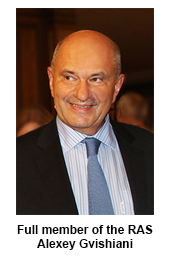
GC maintains active contacts and cooperates with many institutions of RAS, Russian and international geophysical organizations, different analytical and specialized centers, academic institutions and services in Russia and other countries. GC researchers participate in international projects. According to the decision of the Russian Academy of Sciences and the relevant international organizations, GC is:
•Official Russian center of the international WDC network of ICSU;
•Basic organization of WDCs for Solid Earth and Solar-Terrestrial Physics;
•One of five basic organizations of the European-Mediterranean Seismological Centre (EMSC), incorporating more than 60 seismological institutes of Europe;
•Russian ICSU-CODATA center and basic organization of Russian National Committee of CODATA;
•Key node of Space Physics Interactive Data Resource (SPIDR) distributed system, focusing on space weather research.
From January 2005 to October 2018 Academician Alexei Dzhermenovich Gvishiani, a renowned scholar in the field of geoinformatics, artificial intelligence methods and application of information society technologies in geophysics, is Director of GC RAS. A.D. Gvishiani is a foreign member of the National Academy of Sciences of Ukraine and former Vice-President of CODATA, WDC ICSU Committee and EMSC, France.
In October 2018 D. Sc. Corresponding member of the Russian Academy of Sciences Anatoly Alexandrovich Soloviev
- 1882 – 2014 years. 132, International geophysics;
- 1882 – 2014 years. 132, the International Polar Year;
- 1907 – 2014 years. 107 years since the birth of the Vladimir V. Belousov;
- 1957 – 2014 years. 57, International Geophysical Year;
- 2007 – 2014 years. 7, Electronic Geophysical Year.
Made up by M.M. Khrutskiy.











